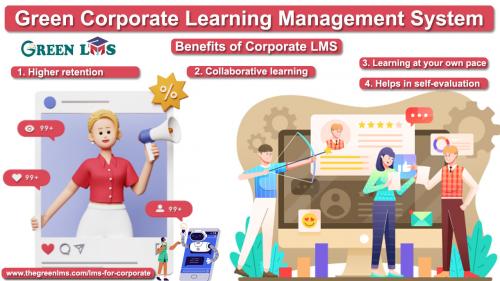The Complete Guide to LMS User Roles for L&D Managers

Implementing a Learning Management System (LMS) is a
great way to streamline your organization's training and development efforts.
An often-overlooked key to LMS success is the careful design of the user roles
and permissions within the system. As an L&D manager, understanding and
effectively assigning these user roles is critical for maximizing your LMS's
impact while ensuring a smooth and secure experience for everyone involved.
Why User Roles
Matter
- Controlled Access: User roles define what each
person can and cannot do within the LMS, protecting sensitive data and
streamlining workflows.
- Targeted Functionality: Roles ensure users only see
the features relevant to them, reducing confusion and improving the
overall user experience.
- Efficient Administration: Well-defined roles ease the
burden of LMS management and enable the delegation of certain
responsibilities.
- Scalability: A clear role structure allows
you to easily onboard new learners, instructors, and managers as your
program grows.
Common LMS User
Roles
Let's break down the key roles
you'll likely encounter in most LMS platforms:
- Learners:
- The heart of your LMS – the
employees, customers, or partners who consume training content.
- Usually have the most basic
permissions – accessing courses, completing assignments, and tracking
their progress.
- Instructors/Trainers:
- Responsible for creating and
delivering content.
- May also need permissions to
enroll learners, grade assessments, provide feedback, and run reports on
learner progress.
- Managers:
- Oversee the training of their
teams.
- Need visibility into their
team's learning progress, completion rates, and performance metrics.
- Might require the ability to
enroll team members into courses and assign learning paths.
- Administrators:
- Hold the most comprehensive
permissions.
- Manage the entire LMS – adding
users, creating courses, customizing branding, troubleshooting issues,
and generating in-depth reports.
- Super Administrators
- Often found in larger
organizations.
- Have overarching control over
multiple LMS instances. They can manage all user accounts, configure
system-wide settings, and access global analytics.
Best Practices
for Assigning LMS User Roles
- Principle of Least Privilege: Start with minimal permissions
and only grant additional access as necessary. This enhances security and
reduces the risk of accidental changes.
- Alignment with Job Functions: Create roles that mirror the
responsibilities of different job titles or departments within your
organization.
- Consider Customization: Utilize custom roles for
unique situations requiring specific combinations of permissions.
- Regular Review: Periodically audit user roles
and adjust them to reflect changes in employees' duties or evolving
training needs.
- Documentation is Key: Create a clear document
outlining each role and associated permissions. This aids in onboarding
and troubleshooting.
Additional
Considerations
- Group-based Permissions: If offered by your LMS,
leverage groups to efficiently manage permissions for sets of users (e.g.,
groups based on departments or job functions).
- Self-Enrollment: In some cases, allowing
learners to self-enroll in elective courses can increase engagement and
reduce administrative workload.
- Guest Access: If needed, consider a ‘guest’
role with limited viewing permissions for potential learners or
stakeholders.
Tips for
Effective User Role Management
- Collaborate with IT: Your IT department plays a
crucial role in security setup and integration with other HR systems.
- Involve Stakeholders: Get input from managers and
potential instructors to identify their needs and ensure the role
structure supports their workflows.
- Provide Training: Offer guidance to users on
their specific roles and the corresponding LMS features.
- Leverage LMS Documentation: Most LMS providers have
detailed documentation on user roles and permissions. Make this resource
readily available to your administrative team.
Conclusion
By carefully designing and managing
LMS user roles, you'll empower your employees, streamline training processes,
and optimize the impact of your Learning and Development initiatives. Remember,
a well-structured LMS is a key pillar in creating a continuous learning culture
within your organization.
Post Your Ad Here
Comments